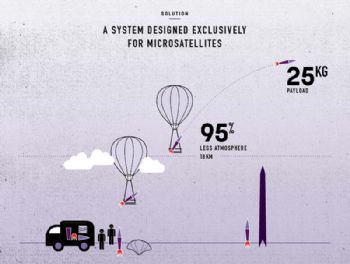
Indiana-based Leo Aerospace (
www.leoaerospace.com), a Purdue University-affiliated start-up, is seeking to open up access to space for micro-satellite companies, by modernising a launch technique first used in the 1950s.
The company plans to use ‘Rockoons’ — high-altitude balloons — that launch rockets into sub-orbital and orbital flights. Sub-orbital launches are frequently used by researchers who need access to zero gravity or vacuums for experiments, while orbital flights are used to launch satellites.
Leo Aerospace, which took its name from Low Earth Orbit, says it will “revolutionise the space industry” by giving priority to micro-satellite developers that are now secondary payloads for large rocket companies.
Currently, developers have to wait to see if there is room left on large rockets carrying government payloads — and they often have to wait six months or more to find space on a rocket.
Micro-satellite developers also have limited options on which orbit their satellites are delivered to.
Abishek Murali, head of mission engineering, said a selling point for Leo Aerospace will be its flexibility and ability to meet customers’ needs, adding that the company can tailor its launch vehicles and its operational capabilities to the exact needs of its clients.
The cost of sending a satellite into space can be up to $60,000 per kg, and Leo Aerospace is confident it can lower that cost for launching micro-satellites, which can weigh 1-50kg.
The Rockoon, a hybrid of a rocket and high-altitude balloon, is less expensive to deploy than a traditional rocket, since there is less drag when the rocket is launched from the balloon 11 miles above Earth, where there is 95% less atmosphere.
This type of system was first used by the US Air Force in the 1950s.
Leo Aerospace says the company’s goal is to launch its first sub-orbital flight by 2020 and to raise further funds to launch its first satellite into orbit in 2022.
Its long-term goal is to increase launch frequency as operations develop.
Leo Aerospace plans to initially launch the Rockoons from existing spaceports licensed by the Federal Aviation Administration; these stretch from the Kennedy Space Center in Florida to Kodiak Island in Alaska.